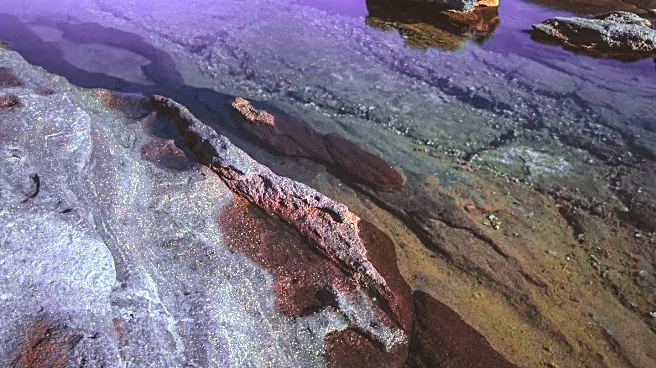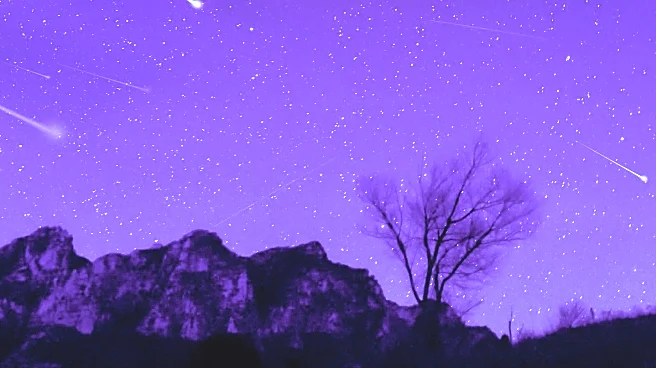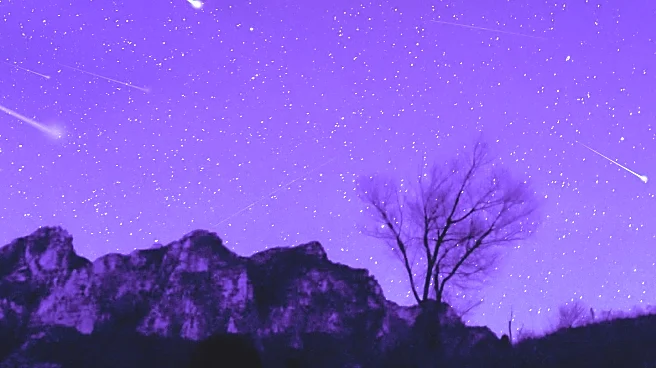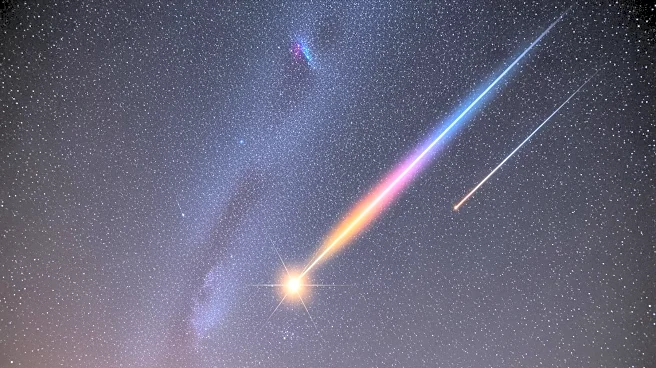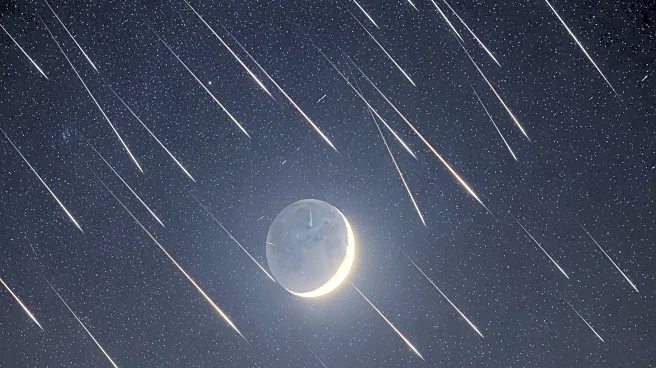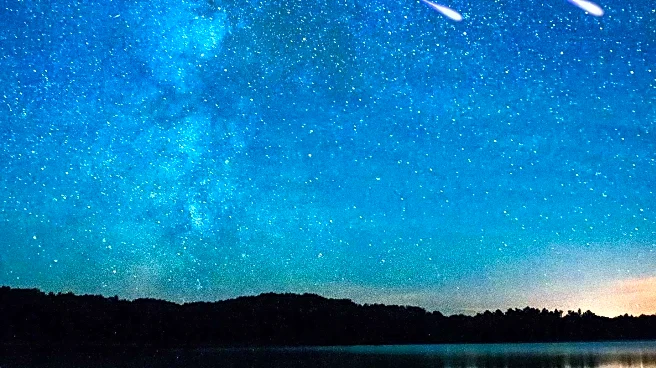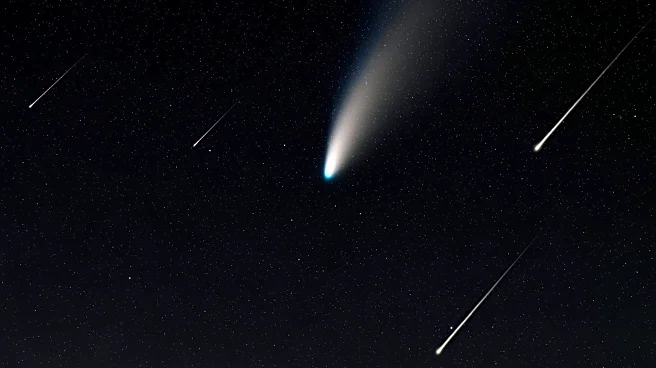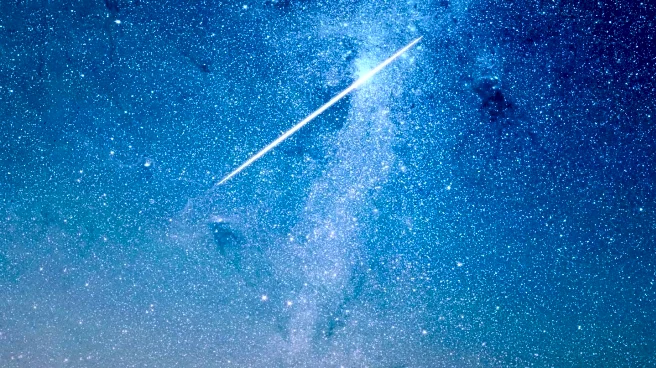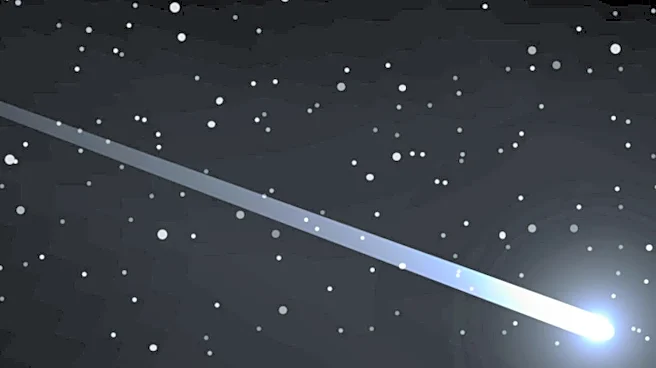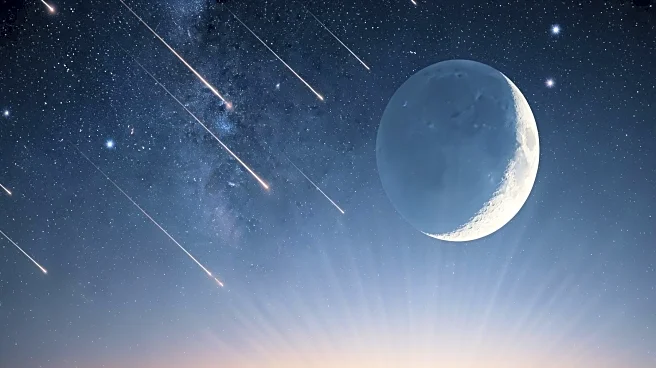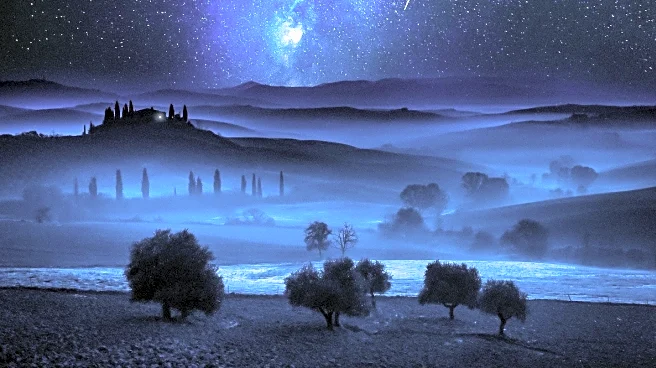What's Happening?
The Orionid meteor shower, originating from Halley's Comet, is set to peak on the night of October 21 to 22, 2025. Known for their speed and brightness, the Orionids are among the most brilliant meteors visible from Earth. The American Meteor Society
reports that the shower is active from October 2 to November 7, with peak activity expected to produce 15 to 20 meteors per hour. This year's viewing conditions are favorable due to the new moon, which ensures dark skies free from lunar interference.
Why It's Important?
The Orionid meteor shower is a significant astronomical event that draws attention from both the scientific community and the general public. It provides an opportunity for educational outreach and public engagement in astronomy. The event also allows scientists to study the remnants of Halley's Comet, contributing to our understanding of cometary debris and its interaction with Earth's atmosphere. For the public, it is a chance to experience a natural spectacle and foster interest in space science.
What's Next?
Skywatchers are advised to find a dark location away from city lights to view the meteor shower. The best viewing time is after midnight, with meteors appearing to radiate from the constellation Orion. As the event unfolds, it is expected to generate increased public interest and media coverage, potentially leading to more educational initiatives and community events centered around astronomy.
